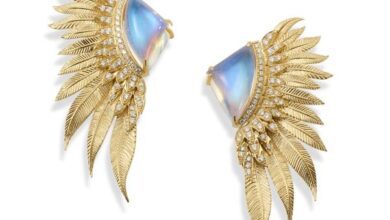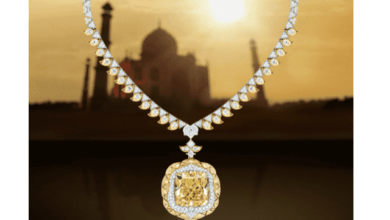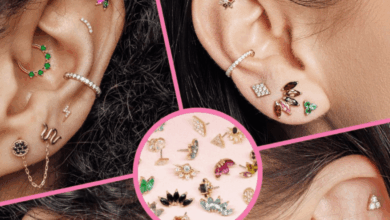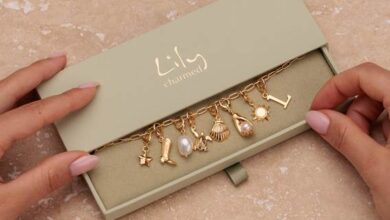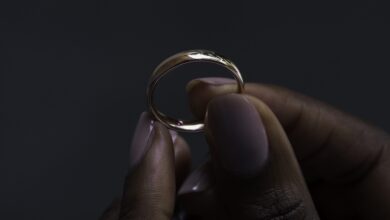A go to guide for pearls
Louise Tippey from the British Pearl Association fills us in on the trends, background and science of this special form of gem.
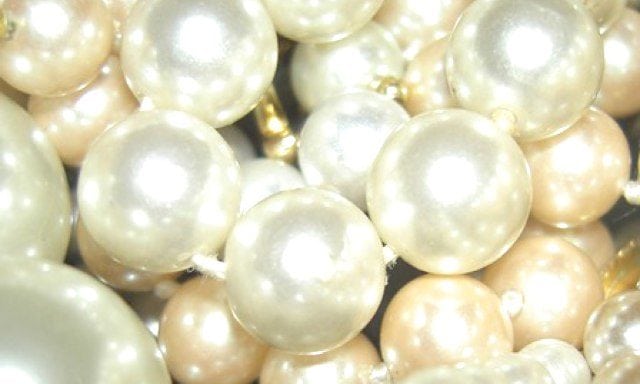
Register to get 1 free article
Reveal the article below by registering for our email newsletter.
Want unlimited access? View Plans
Already have an account? Sign in
Pearls are in right now. Young A-listers from Hollywood and the pop world, along with royalty have put pearls centre stage. Every single pearl is unique, each one special and able to be worn in many ways, by many different types of customer. Throughout history, pearls have symbolised wealth, power, religion, and influence, and they are particularly notable because there is no other gem that grows inside a living creature.
This red hot fashion status that they are currently enjoying means you need to be selling them with gusto to your own customers.
We hotfooted it around the country as mystery pearl shoppers, finding out what sales staff knew about pearls. In total we visited 100 jewellery retail outlets, with an equal mix of independents, multiples and department store concessions. We didn’t leave out the online pearl retailers either, sending 100 enquiries to a variety of outlets (again, including department stores, independents and multiples), and 90% of them replied to our questions.
Independents
Although 70% of independents knew the pearls they were selling were cultured, 40% could not describe what cultured meant. Some 30% of staff explained how pearls were formed and the difference between a cultured and natural pearl, and they were also able to explain that pearls are either freshwater or saltwater. Only 20% of staff (usually the store owner) could explain the types of pearls and the factors affecting the value of a pearl.
Multiples
50% did not know that the freshwater pearls they sold were cultured. They described pearls as either freshwater or cultured, and only 10% of staff gave an accurate explanation of how a pearl (cultured or natural) was formed. Only 10% of retailers that sold both saltwater and freshwater pearls were able to give an accurate explanation of the differences between the pearls and why the saltwater pearl strand costs more than the freshwater pearl strands. Amongst the multiples the most common word to describe the pearls was “shiny”.
Department stores
60% knew that pearls were cultured and 35% accurately described what this meant. Of those stores that sold freshwater and saltwater pearls 80% of staff did not the difference between freshwater and saltwater pearls (other than the fact that they are found in freshwater and saltwater). Those that did know the differences were extremely knowledgeable and were able to talk about the different molluscs, where they are found and some factors affecting their value. Only 15% of staff used any pearl terminology (Other than the word “cultured”). Pearls were mainly described as “nice”, “shiny “and “lovely”.
One store that sold Tahitian pearls when asked why they were more expensive replied “because they are bigger”.
All Retail Stores
Only 10% of all stores described the “lustre” of the pearl. When asked: “How do I look after my pearls?” Only 20% were able to offer us any advice about pearl care.
Points of Interest
There was a significant lack of pearl terminology – one independent store described Mikimoto pearls as the “best”, with no mention of lustre or other properties. They were aware that the pearls are cultured pearls but did not mention saltwater or akoya pearls. There appears to be a lot of confusion around freshwater and cultured pearls and confusion around a natural pearl and a cultured pearl.
Across the retailers the variations in pearl knowledge was huge. Knowledge was either very good or very poor. We had to initiate 35% of all engagement. This was really surprising but worst of all we were ignored completely by three stores.
Celebrate Success
We want to give a big shout out to John Lewis in Reading – they really impressed us with their pearl knowledge. We are also delighted to say online pearl retailers faired much better than the bricks-and-mortar stores. 90% of replies were accurate, informative and actually quite impressive. All used lots of pearl terminology, but this is perhaps not surprising really as they have time to research their replies.
Basic lessons in pearls
Pearls are formed as a result of a foreign body entering the oyster or mollusc. It protects itself by covering the foreign body (irritant) with cells which then form around the irritant and slowly (layer by layer) cover the foreign body with layers of nacre. This forms the pearl.
A natural pearl does this all on its own and is a remarkable miracle of nature. Natural pearls are very rare now and command high prices. Cultured pearls are formed the same way, the big difference being that the “foreign body” (bead nucleus and mantle tissue or just mantle tissue) is deliberately inserted by man into the mollusc. The pearl is then formed in exactly the same way as a natural pearl.
Obviously if you sell different types of cultured pearls it’s good to know some of the differences between them over and above the obvious colour difference!
The four main types of cultured pearls
Freshwater Cultured Pearls – A freshwater shell can produce dozens of pearls (even up to 50!). They are the most common type of pearl. Freshwater cultured pearls occur in a wide variety of colours and shapes. Whilst white and cream are the most common colours for cultured pearls, other popular colours are black (peacock colour) and pastel pink. They are mainly commercially produced in pearl farms in China and Japan.
Akoya Pearls (saltwater) – Kokichi Mikimoto was the first to develop modern techniques to culture pearls in Japan by inserting a bead in the mantle tissue of the mollusc. The akoya pearl is the pearl with which Mikimoto started pearl cultivation. These pearls are renowned for their brilliant lustre and are the akoya oyster is the smallest pearl producing oyster in the world. They are available in sizes from 3-10 mm.
Tahitian Pearls – Pearls are grown in the black lipped mollusk. But only those grown in French Polynesian are officially Tahitian pearls. Tahitian pearls come in a variety of different dark colours from green to grey and display beautiful peacock coloured overtones. These pearls are on average between 8-13mm in size and shapes include round, baroque, teardrop and semi-round.
South Sea Pearls – South Sea pearls are the rarest and largest of all pearl types. They can take up to four years to grow. The lustre is the “soul” of the pearl, an inner glow that gives the pearl its luminescence (Atlas Pearls). They come in colours from ice white, sparkling silver to an amazing deep gold. South sea pearls range in size from 8 to 20mm, with the average being 12mm. They are highly prized gem with a hefty price tag. White South Sea pearls are cultured in Australia and golden South Sea Pearls are produced primarily in the Philippines and Indonesia.
If you sell different types of cultured pearls, it’s also worth knowing some of the factors that affect the value of a pearl.
Lustre – The greater the lustre of the pearl, the more valuable it is. The highest lustre is often metallic like. For many, lustre is the most important value factor. The finest pearls are highly reflective.
Shape – The more round the more valuable (all other value factors being equal).
Size – The larger the pearl, the more valuable it is. However, you need to take into account the other factors affecting the value of the pearl, for example the shape. Pearls are measured in millimetres.
Surface – The fewer blemishes the better. Some surface imperfections actually add to the beauty and uniqueness of a pearl.
Colour – There are two parts to the colour; the body colour is the primary colour (for example white) and the overtone of the pearl colour (for example silver overtone). Cultured freshwater pearls come in an array of colours. Colour generally does not affect the value of a pearl (with the exception of rare or natural pearls).
Basic Pearl Care
Pearls do not like soaps, perfumes, hairspray and detergents. Clean them immediately if they come into contact with any detergent. They are best stored in a soft bag and lay them out flat if possible to avoid scratching. They should be restrung every year to prolong their life and prevent them breaking.
Clean your pearls with a soft damp cloth (if possible after each time you wear them). Wear your pearls often as they don’t like to be neglected.
Conclusion
The results of our small survey make disappointing reading for the pearl retail sector. While they are not without their positives, these points appear to be token rather than significant. Perhaps start by taking all your staff to a retail store (this doesn’t have to be a jewellery retailer) that offers superior service and watch and learn. It’s really never too late to educate and inspire your staff.


